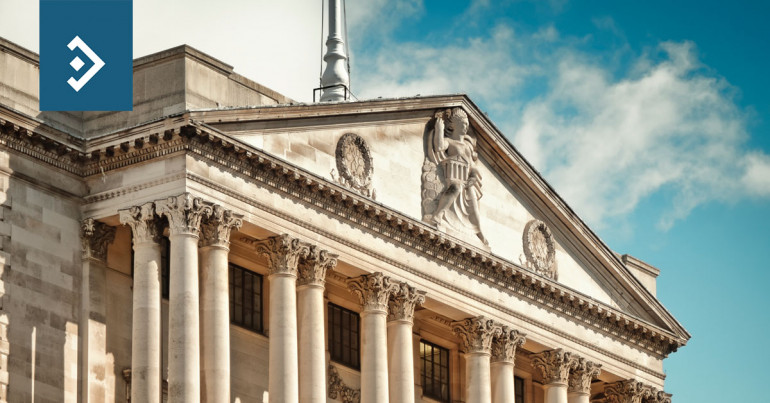
BOE’s Ramsden sees policy as apt.
Morning mid-market rates – The majors
18th February: Highlights
- Negative rates no more than contingency planning
- Retail sales react to brighter outlook
- Europe’s recovery could be uglier than its lockdown
Central Bank always learning new policy tools
Over the past few months there has been plenty of discussion about whether negative rates are an appropriate policy tool. Ramsden believes that the discussion has been no more than contingency planning should support for the economy using QE and financial stimulus fail to avert any significant downturn.
Ramsden along with his boss, Governor Andrew Bailey and Chief Economist Andrew Haldane have remained unconvinced, not about the effectiveness of taking rates negative, but more about such a move being necessary.
Independent members of the MPC have been less optimistic about the recovery and have therefore favoured a serious study of the possible outcomes but the technocrats appear to have won the day.
The UK economy stands at a crossroads. Chancellor Rishi Sunak is under pressure to extend some of the measures he has put in place, such as the furlough scheme and the stamp duty holiday.
He may very well bow to the pressure, but he will also be banking on the roadmap being announced on Monday by the Prime Minister to provide the impetus to get the economy back on the path to substantial growth. He is likely to flesh out his plans during his presentation of the Budget.
One serious concern will be if the furlough payments become unemployment payments as businesses, particularly SMEs found that their business model has become unsustainable. Unemployment schemes will be high on Rishi Sunak’s list of priorities.
He is acutely aware that there are two major dangers to be faced: First that the lockdown is too soon, and infection rates begin to rise again despite the vaccination programme and second that unemployment continues to grow.
The pound is in something of a correction, as was suggested recently, before it returns its assault on the 1.40 level versus the dollar. Yesterday, it fell to a low of 1.3829, closing at 1.3863.
Considering your next transfer? Log in to compare live quotes today.
The recovery is beginning but will still need stimulus
While this is very positive news, it will also fuel the Republicans in Congress who believe that not only is President Biden’s $1.9 trillion stimulus package not needed, but it could also lead to such an increase in demand that it could fuel an overheating of the economy that would force the Fed to reverse its dovish monetary policy stance.
Producer Prices which are an indicator of inflation at the factory gate also rose significantly. This raises another red flag for the stimulus package although with the Treasury still gung-ho about going big, Biden’s plans are unlikely to be derailed.
There Was also one further piece of positive news as industrial production continued its recent recovery. It rose by 0.9% in January following a 1.3% rise in December.
The minutes of the latest FOMC meeting were released last evening. The Committee voted unanimously to retain the current level of support for the economy, noting that the longer-term indicators are still well below the Fed expects.
Any change in the pace of QE will need to be communicated to the market well in advance. This is continuation of Jerome Powell’s policy of providing investors and traders with sufficient advance warning which is aimed at smoothing volatility.
Following the announcement, several members pointed to the second half of the year as the soonest that the real effect of the recovery will be seen.
There are the first signs that the link between risk appetite and dollar weakness is in danger. As long-term yields begin to rise, it is becoming likely that the more traditional link between a strong economy and a strong currency returns.
Yesterday, the dollar index rose to a high of 91.05, closing at 91.02. This move reverses completely the fall seen on February 9th and, if sustained, forms a technical pattern that points to further gains.
SMEs face even tougher times when lockdown is lifted
There are concerns, particularly in Germany that the pace of the rollout means that although the country was spectacularly successful in its test and trace programmes when the Pandemic was at its height, the time it is taking to inoculate those most vulnerable will result in an avoidable loss of life.
The green shoots of recovery are manifesting themselves in economic confidence, the data for which was released earlier in the week with the trend set to continue when consumer confidence numbers are released later this morning.
The issues facing the Eurozone going forward stretch beyond the health of the economy. They are systemic and Ursula von der Leyen will have several bridges to rebuild if she is, as she has said, to be positively judged on her overall record when her term in office comes to an end.
In one of his first speeches as Italian Prime Minister, Mario Draghi reaffirmed his feelings about the euro.
He demanded that the parties in power before he took the reins begin to love the euro. Draghi favours the single currency, but his pragmatism may still come to the fore, convincing him that the Italian economy cannot be changed, and the shackles of strict monetary policy don’t work.
He is unlikely to give up hope quickly, however. He is a believer in fiscal prudence and control of debt to GDP ratios, together with budgetary responsibility.
His first major challenge is the same as what brought down the previous administration.
The country is demanding support and the Eur 200 billion that is coming from Brussels is seen as earmarked to support the economy. However, rather than handouts, the Prime Minister wants to invest in the future. The argument against such a plan is that without support now, there will be no future.
The euro has continued its recent correction and now looks likely to test the 1.20 level versus the dollar again. It reached a low of 1,2023 yesterday, closing at 1.2042.

About Alan Hill
Alan has been involved in the FX market for more than 25 years and brings a wealth of experience to his content. His knowledge has been gained while trading through some of the most volatile periods of recent history. His commentary relies on an understanding of past events and how they will affect future market performance.”



